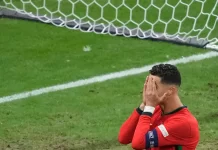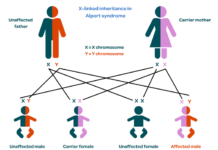Introduction:
Despite advancements in gender equality and women’s empowerment, the of dowry—a common societal norm in many regions of the world—remains a persistent issue. When a couple gets married, the bride’s family gives the groom’s family dowry, which is money, property, or gifts. This which ought to have been abandoned in the past, nonetheless causes difficulties for women and upholds gender inequality. In this blog post, we examine the dowry issue, its effects, and various fixes to do rid of this destructive custom.
The Consequences of Dowry:
Dowry lays a heavy financial burden on the bride’s family, frequently requiring them to sell all their possessions or go into debt in order to satisfy the needs of the groom’s family. This increases social inequality and economic imbalance.
Gender-based abuse: Dowry conflicts can lead to the physical and psychological abuse of brides by their husbands and in-laws. Domestic abuse and harassment associated to dowries are frequently caused by the belief that the bride is an economic obligation.
Dowry transforms women to simple commodities, valuing them according to their monetary value rather than their unique qualities, skills, and goals. Objectification of women. Their dignity is violated by this act, which also reinforces gender stereotypes.
Addressing the:
Governments should impose severe laws prohibiting dowry and make it a criminal offence. In order to provide victims with justice and serve as a deterrent for potential criminals, these laws ought to include clauses that guarantee swift and impartial trials.
Public awareness efforts can be quite effective in influencing society perceptions on dowry. Gender equality should be extensively promoted and dowries should be outlawed through the media, schools, and community organisations.
Education and empowerment: Investing in girls’ education and giving them financial independence can aid in ending the dowry cycle. Women can become financially independent and dispel the myth that they are a burden on their families by improving their skills and knowledge.
Community involvement: When tackling the dowry issue, it is crucial to include religious and community leaders. They can utilise their power to advance gender equality, oppose the practise of using dowries in marriage, and advocate fair and equitable unions founded on love and respect.
Support systems: Creating hotlines, counselling offices, and shelters specifically for dowry victims can offer them the essential safety and support. These tools can assist women in leaving violent marriages and reestablishing their lives.
Additional Points to Consider:
Changing attitudes: It’s important to confront and change society perceptions of dowry in addition to taking legal action and launching awareness efforts. This entails working to change societal attitudes and norms that support the practise. Breaking the social acceptance of dowry can be accomplished through promoting open communication, challenging conventional wisdom, and encouraging open discussions.
males’s role: It is crucial to involve males in the fight against dowry. By deliberately refusing to accept dowry during marriage negotiations, men can play a crucial part in ending this custom. Not only as prospective grooms, but also as brothers, fathers, and friends who support gender equality, men should be encouraged to speak out against dowry.
Increasing enforcement: Although dowry-related laws are prohibited in many nations, doing so is nevertheless difficult. Governments
Economic alternatives: By giving women access to the economy, we might lessen the pressures associated with dowries. For women to be economically empowered, governments and NGOs can start skill development programmes, vocational training, and entrepreneurship projects. In addition to increasing their financial independence, this disproves the idea that women need dowries for security.
Parental accountability: Parents are heavily involved in maintaining the dowry system. The cycle can be broken in part by informing parents of the negative impacts of dowry and emphasising the value of treating their daughters and sons equally. Parental priorities might be shifted away from dowry by highlighting the importance of education and supporting the aspirations of their daughters.
Media representation: The media has a significant influence on how the public feels. Media outlets should aggressively support accurate images of women, dispelling myths and damaging customs like dowries. The media can spur societal change by highlighting the achievements of successful women, advancing gender equality in romantic partnerships, and bringing attention to the harmful effects of dowry.
Cooperation across borders: Dowry is not confined to a single culture or region. It exists in diverse forms in many nations. International cooperation can promote knowledge sharing and the exchange of best practises to tackle the dowry issue jointly. This includes promoting policy reforms, spreading awareness around the world, and sharing effective intervention techniques.
Conclusion:
A multifaceted strategy encompassing legal, social, cultural, and economic initiatives is needed to end the dowry issue. We can remove this damaging practise with coordinated efforts and a shared commitment to gender equality, even if it is a complex subject with deep roots in societal systems. By tackling the dowry issue, we not only empower women and advance equality, but we also help create a society that is more inclusive and just for coming generations.










































